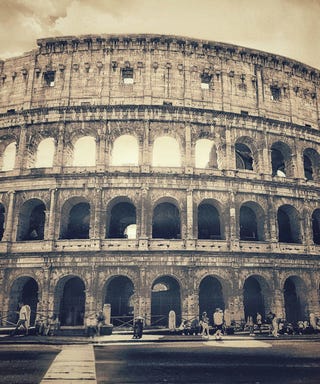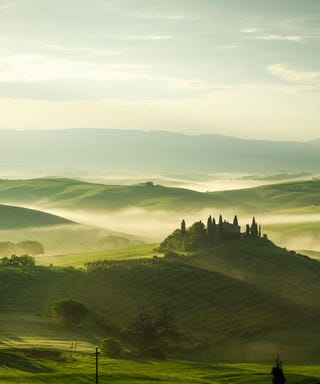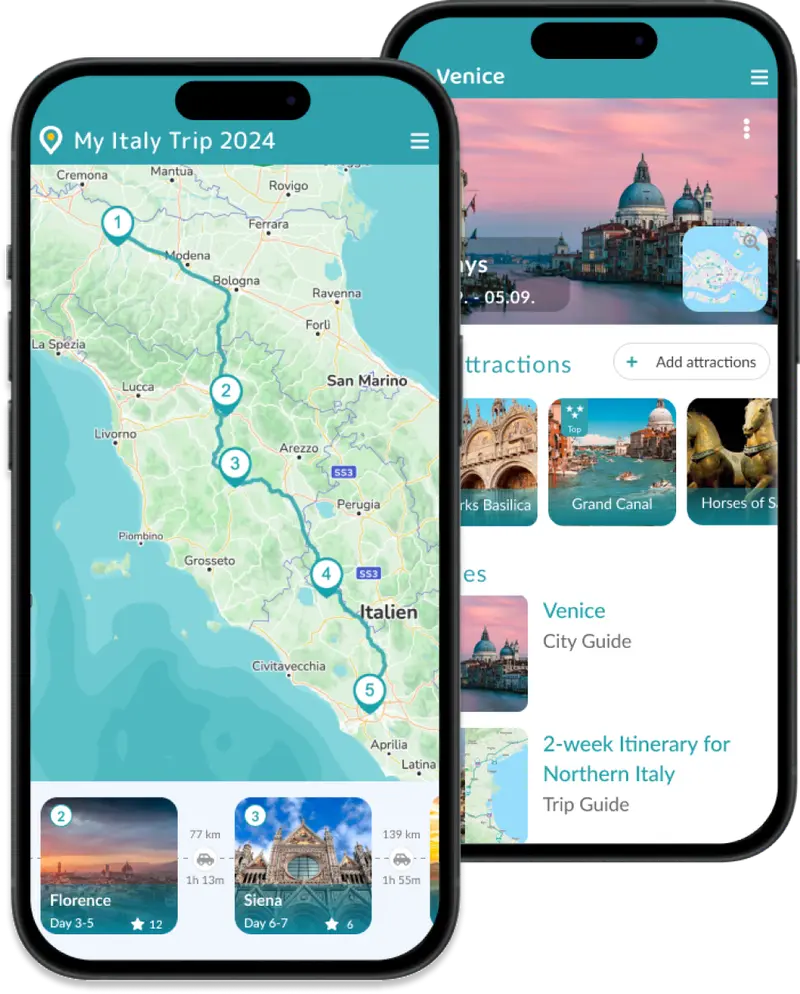Venice, a city unlike any other, floats on the waters of the Venetian Lagoon and the Adriatic Sea. Renowned for the Grand Canal, Saint Mark's Basilica, and the stunning Piazza San Marco, Venice captivates with its intricate history, culture, and beauty. Explore the charming streets, take a gondola ride along the Grand Canal, and visit the glass artisans of Murano. The Floating City truly embodies the romance and beauty of Italy, making it a dream destination for visitors from around the world.
Top Highlights of Venice



As you step onto its expansive grounds, you’re walking the same stones that have hosted centuries of Venetian history, from grand processions to intimate café gatherings. Here, amid the cooing of pigeons and the distant serenade of a gondolier, you can truly feel the spirit of Venice.







Inspiration
Travel Information
Best time to visit Venice
Venice is a beautiful city that can be enjoyed year-round. However, since summer is completely overcrowded we highly recommend to avoid this time of year.
Best Time to visit Venice are March to May and September to October. This period offers the best of Venice with mild temperatures and fewer crowds than the peak summer months. In September you can also experience the Venice Film Festival.
Summer: July and August are Venice's peak tourist months. Expect high temperatures and immense crowds with congestion on the streets and bridges.
Winter: November to March brings cooler weather with fewer tourists and lower prices. Be aware that sights close earlier, and fewer activities take place. In Winter time also expect occasional flooding, especially at St. Mark's Square and along Zattere. In February the popular Carnevale festival takes place. It's a big party, again with huge crowds.
How to get to Venice
By Plane
Venice's Marco Polo Airport is the main gateway for international travelers. Located about 8 kilometers from the city, it's connected via the Alilaguna water bus, buses and taxis.
- The Alilaguna water bus leaves from the Dock (follow the light-blue wayfinding) and arrives at San Marco or Rialto in 60 to 70 minutes. Alilaguna Website
- The AeroBus No. 5 goes to the city center at Piazzale Roma within 25 to 40 minutes. The bus stop is a few metres from the airport's arrivals terminal. A one-way bus ticket costs € 8.
- There is also the ATVO express bus line 35.
By Train
There are two train stations in Venice. Mestre on the main land and Santa Lucia Station, which is the gateway to Venice. You can choose an overnight train connection from Europe to make the most out of your trip. Or, if you are already in Italy, you can easily get to Venice by train from other major Italian cities.
By Car
Driving to Venice involves parking at the Piazzale Roma or on the island of Tronchetto, as the historic center is entirely pedestrianized. From these parking areas, you can easily transition to a Vaporetto (water buses) or water taxis to get to your hotel.
Getting around

How much are the tickets for a Vaporetto?
Currently, a single ticket (valid for 75 minutes) costs €9.50. One ticket is usually sufficient for your trip to Venice. If you plan to travel more than twice with a Vaporetto, e.g. to visit the islands of Murano and Burano, the 24-hour ticket for €25 is your best option.
Check the current Vaporetto pricing.
Where do I buy a ticket?
Every Vaporetto station has self-service ticket machines or ticket sales shops, making it easy to buy tickets. If you prefer to purchase your ticket online, you have several options. You can buy it via Venezia Unica, the official AVM Venezia App, or even through WhatsApp (Chat&Go®). For more information, visit ACTV.
Don't forget to validate your ticket at the validation machine before entering the landing stage of the Vaporetto station.
Venice Access Fee
Venice is currently implementing a new entry fee for daytrippers only to better manage the extrem overtourism. Overnight guests are exempt, as they already pay the regular tourist tax. Nevertheless, registration here is necessary.
In 2024 Venice is testing the system on 20 days in May, June and July.
In 2025 the system will come into effect. To pay, day trippers will need to register on a portal and pay the fee to receive a downloadable QR code. This will be enforced by local authorities who will randomly check people in Venice. (check currrent information)
Fancy a roadtrip?
Be inspired by our hand-picked road trips.



History
Venice's story is as intriguing as its landscape. Born from necessity, it arose after the fall of the Roman Empire, when mainlanders fleeing Lombard invasions in the 6th century sought refuge on the islands of the Venetian Lagoon. These islands, initially home to fishermen and salt workers, became the seeds of a new settlement. By the 7th century, Venice gradually transformed from a collection of isolated communities into a cohesive city-state, eventually electing its first doge, or duke, signifying the start of its unique political system.
The city's strategic location between the Western and Byzantine Empires, coupled with its inhabitants' navigational prowess, turned Venice into a pivotal maritime and trade center. From these early and turbulent beginnings, Venice evolved into a major power, its prosperity underpinned by its role as a trading intermediary and its political independence secured through complex negotiations and alliances. The doge's power was curbed over time, leading to a more stable governance structure, which helped the city thrive as a trade hub. By the late 9th century, Venice was solidified as a city-state, marked by the election of doges by popular vote, though this system was not without its challenges.
Venice reached its zenith as a maritime power in the Middle Ages and Renaissance, becoming a staging area for the Crusades and a center for commerce and art. Its influence extended across the Mediterranean and into the heart of the Italian peninsula. Despite the eventual decline of its maritime dominion, Venice's legacy as a center of art, culture, and commerce endures, with its historical significance recognized by its UNESCO World Heritage status.



